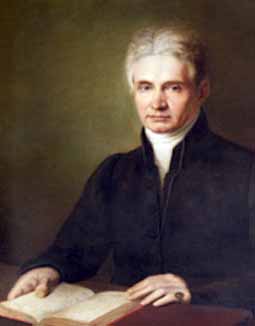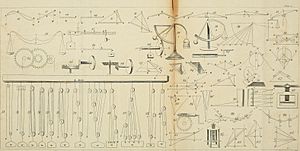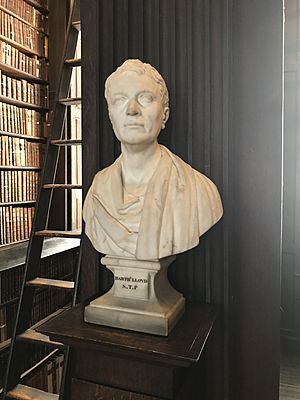Bartholomew Lloyd facts for kids
Bartholomew Lloyd (1772–1837) was an important Irish mathematician and educator. He spent his whole career at Trinity College Dublin, a famous university in Ireland. He made big changes to how math was taught there, especially by bringing in calculus. Later, he became the Provost, which is like the head or president of the college.
Life of Bartholomew Lloyd
Bartholomew Lloyd was born in New Ross, County Wexford, Ireland, on February 5, 1772. His father passed away when Bartholomew was young. An uncle who was taking care of him also died soon after. This meant Bartholomew had to work hard to succeed on his own.
He joined Trinity College Dublin in 1787. He was a very bright student. In 1790, he was chosen as a Scholar of the college. He earned his first degree (B.A.) in 1792. By 1796, he became a junior fellow, which is a teaching and research position. He continued his studies, earning more advanced degrees over the years.
Teaching and New Ideas
In 1813, Lloyd became the Erasmus Smith's Professor of Mathematics. This was a very important teaching role. In 1822, he also became the Professor of Natural and Experimental Philosophy.
In both these roles, he changed how subjects were taught. He was the first to bring new French mathematical ideas to Trinity College. This included teaching calculus, a type of math used to study change.
Leadership Roles
Bartholomew Lloyd also held other important positions at the university. He was elected professor of Greek several times. He also served as a lecturer in divinity.
In 1831, he was chosen as the Provost of Trinity College. This meant he was in charge of the entire college.
Under his influence, Trinity College also started a special observatory to study magnetism. In 1835, he became the president of the Royal Irish Academy, a leading group for science and learning in Ireland. He also led the British Association meeting in Dublin that same year.
Bartholomew Lloyd passed away suddenly on November 24, 1837. He was buried in the college chapel. To remember him, the Lloyd Exhibitions were created in 1839. These were like scholarships for students. A marble statue of him, made by Thomas Kirk, is in the library of Trinity College.
Works
Besides his scientific papers, Bartholomew Lloyd also wrote several books:
- 1819: A Treatise on Analytic Geometry, a book about a type of geometry that uses algebra.
- 1822: Discourses, chiefly Doctrinal, delivered in the Chapel of Trinity College, Dublin, a collection of his speeches.
- 1826: An Elementary Treatise of Mechanical Philosophy, a book about how things move and work.
Family
Bartholomew Lloyd married Eleanor McLaughlin when he was young. They had ten children together, four sons and six daughters. Their oldest son was Humphrey Lloyd, who also became a famous physicist.
Legacy
In 2018, a special plaque was put up in New Ross to honor Bartholomew Lloyd. This was organized by the National Committee for Commemorative Plaques in Science and Technology. The plaque was revealed by Professor Patrick Prendergast, who was the Provost of Trinity College at the time.




